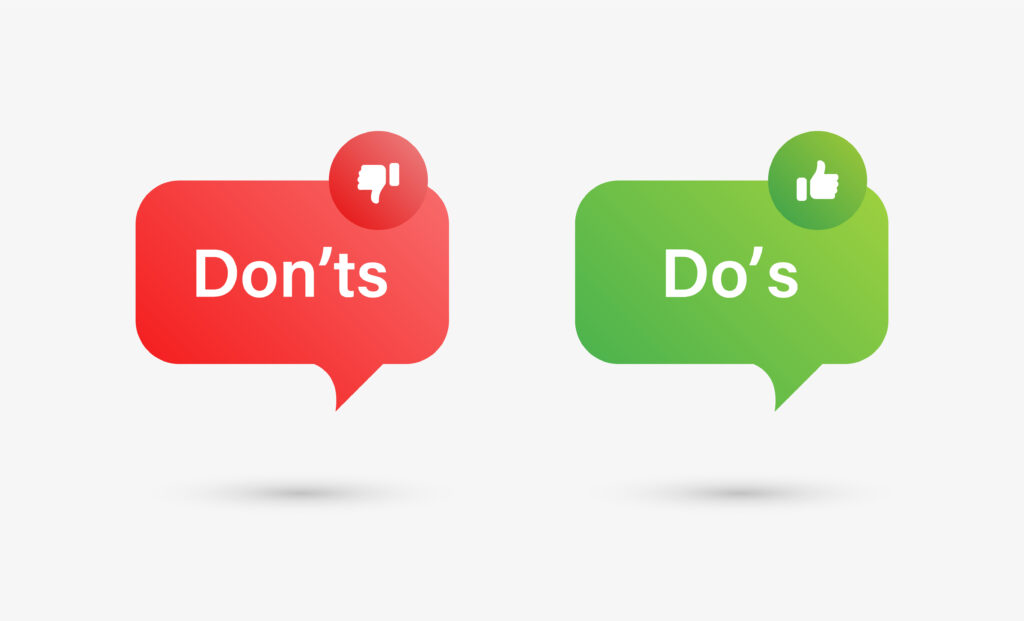
Undoubtedly, images are the lifeblood of web design. You must have seen websites displaying work culture and developing an emotional bond.
Without them, marketing becomes a big question. But, can every other business afford to get original images?
No!
That is why website designers are always in search of stock photos. Many many sites provide affordable or even free images. But not every other stock image is the perfect fit for your website.
Though the right stock images can enhance your content, poor selection can destroy a brand’s identity in no time. So, keep reading to discover the basic dos and don’ts of utilizing stock images in web design.
Things to Do:
-
Consider the Target Audience
Never use stock images as fillers of white space. Every image should have a purpose and deliver a message. So, make sure to give an appropriate message to the intended audience. Even a good image will have no value if it doesn’t suit your audience.
For instance, if you are a construction company, and the target audience is from the elite group. Then you will display luxurious construction projects and refrain from old-fashioned styles.
Likewise, study the values and demographics of your audience. For instance, white symbolizes happiness in some cultures. At the same time, others consider it a sign of death and dismay.
Other things like age group, traditional values, and educational level are vital in the selection criteria.
-
Edit Smartly
Tons of stock photos are available online. If consumers see generic images utilized images on your site, they will get a negative perception. Therefore, you can make them stand out through editing.
Using a suitable font, changing the background, and selecting ideal colors are some useful steps to transforming pictures. You can also crop the image, put a vintage look, or add text to bring uniqueness.
Yes, many stock images are overused. Using these typical photos may question your credibility. But editing can bring a huge difference.
For instance, let’s say you choose an image of a coffee jar in red color with a shop in its background. You can change the background to plain, the color to black and white, and add some text to customize the image.
Similarly, you can use bright and bold colors for a kid’s brand. A B2B business can choose colors that go well with the website’s color scheme.
-
Always Check the License
Most stock images can also be used for commercial purposes. But you should make sure to check their license details.
Even if it’s a blog where you use Ads to generate income, it will come in the commercial category. So, if the stock image is allowed for commercial use, it will be mentioned under its license.
If the license clearly states not to use the image commercially, you must avoid doing so.
Things Not to Do:
-
Never Forget the SEO Element
Some images look visually appealing. But, from the SEO perspective, they may not be the right choice. Large pictures can make your site heavy and increase the loading time. It can lead to a higher bounce rate and low conversions.
To avoid this, you can use image compression tools like JPEG Optimizer, Tiny PNG, Kraken, Compressor.io, Optimizilla, and many others.
Furthermore, if you have a site on WordPress, you should check the image guidelines.
Also, try to submit an image sitemap to Google. This map contains URLs of every image used on your site and their description. Alt-text is another essential factor of image SEO. It is a short description of the image that appears on the site if it takes too long to load.
To know more about SEO image optimization, check out this guide.
-
Don’t Pick Irrelevant and Generic Images
If you randomly select any stock image, you are likely to pick a generic one.
Consider the below image; for example.
source: Unsplash
The above picture looks common, and almost every other business can use it. Suppose you pick a picture specifically related to your business. In that case, it is likely to leave a positive impact.
For instance, a coffee manufacturing company can show images of coffee beans being processed in the factory. It will look generic if they show a team of individuals sitting in the lounge.
Likewise, refrain from using irrelevant images. For instance, if a web page is about facial treatments, display products related to facials, machinery used, and people having this service.
The photos will look irrelevant if you use images of makeup products, hair care products, and nail art items. Though these images belong to the beauty industry, they won’t be directly related to the web page.
-
Don’t Compromise on Quality
High-quality images leave a positive impact on consumers. Think of a site that has blurry and unclear images. Will you ever place an order on that site?
You won’t! Because the site looks unprofessional. Therefore, it isn’t easy to trust. So, always prioritize quality. The images should be of high resolution, clear, and professionally photographed.
Try paid ones if you fail to find such images in the free photo category. Purchasing pictures is usually affordable, and you can get these from reliable websites at various pricing plans. Some of these premium sites even offer free photos every month.
Wrapping It Up
All in all, stock photos are a fantastic choice for web designers. Besides being pocket-friendly, they are just a click away.
However, consumers are smart enough to determine if you are utilizing stock photos. You should spend some time customizing and editing them according to your brand. Also, keep the target audience in mind and check the license before using images commercially.
Reaping maximum benefits from stock photos will no longer be difficult if you keep these dos and don’ts in mind. Good Luck!
